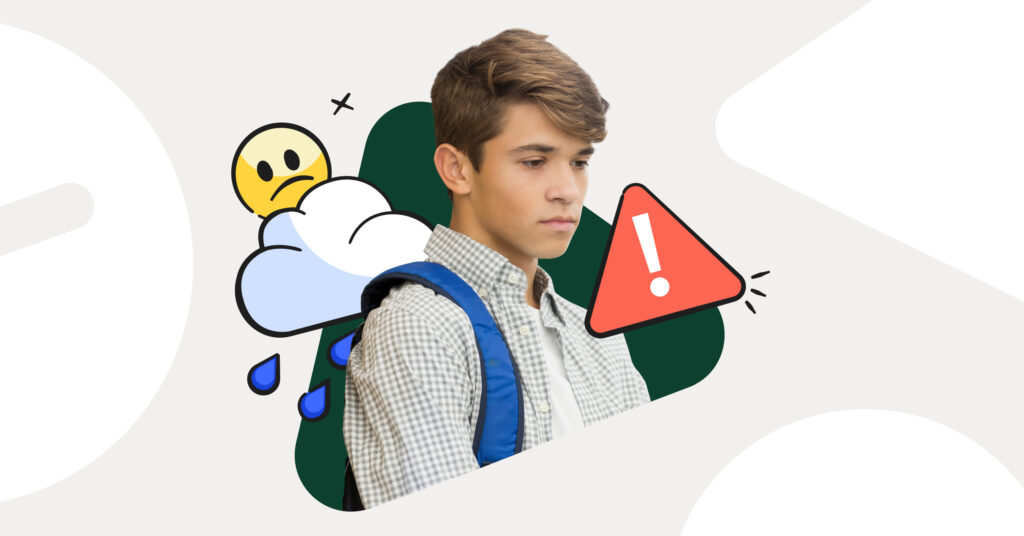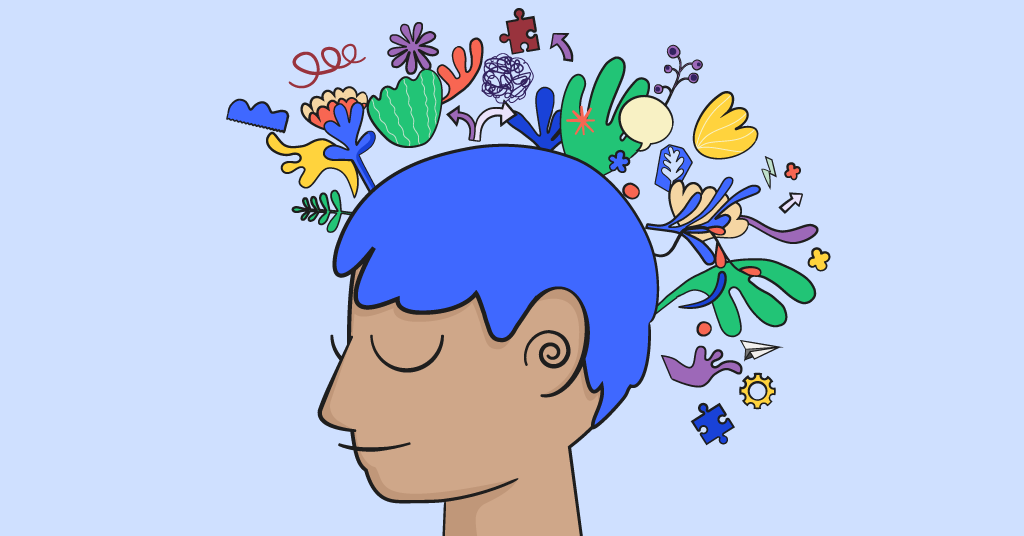
**This blog post was updated on March 29, 2024.**
As adults, we often imagine children as perpetually happy, curious creatures. Without grown-up cares and worries, kids should seem carefree and easygoing. However, depression often begins in childhood, and recognizing the signs early can be crucial to proper treatment.
Unlike most adults, children often struggle to articulate their emotional experiences, especially when it comes to mood disorders like depression in children. This makes it even more critical for you to know and recognize the signs. This article will cover the types of depression disorders in adolescence, the warning signs of depression in kids and teens, and strategies for early detection.
Types of Depression Disorders
Depression is a complex mood disorder that affects millions worldwide. While many don’t develop it until later in life, some people experience their first symptoms and episodes in childhood. Psychologists and specialists have identified several types of depression disorders.
The first two major categories are clinical depression and situational depression. Clinical depression is ongoing and tied to a particular life event, while situational depression follows an emotional upheaval, like losing a loved one. Both types of depression impact a person’s mood and can require treatment, but clinical depression is often chronic.
Other types of depression disorders
Major depressive disorder (MDD): MDD is a mood disorder that causes a persistent feeling of sadness and loss of interest and can interfere with a person's daily life. Symptoms include:
- An overall depressed mood
- Loss of interest in hobbies or activities
- An increase or decrease in appetite or weight
- Changes in sleep habits
- Fatigue
- Difficulty concentrating
- Feelings of worthlessness
- In extreme cases, thoughts of suicide or idealization of death.
Persistent depressive disorder (PDD): Unlike MDD, PDD produces periods of depression that can last days to years, followed by brief breaks in symptoms. The symptoms are similar to MDD but can include anger, irritability, low self-esteem, and oversleeping. This can affect children's depression in unique ways.
Bipolar disorder: Those experiencing bipolar disorder have episodes of major depression followed by a spell of significantly elevated mood called mania, which can vary in intensity. Those experiencing bipolar disorder can have physical symptoms, including aches and pains in addition to anxiety, irritability, and severe indecision. In extreme cases, bipolar disorder can increase the risk of psychosis, hallucinations, and suicide.
Premenstrual dysphoric disorder (PMDD): For adolescents who have begun menstruating, cyclical depression can occur. PMDD goes beyond the symptoms of premenstrual syndrome: irritability, bloating, cravings, and fatigue. Those experiencing PMDD have pronounced mood swings, extreme fatigue, difficulty concentrating, and can be prone to overeating and bingeing.
Seasonal affective disorder (SAD): During the winter months, SAD can develop, leading to depressed mood, fatigue, and other symptoms of MDD. However, unlike other types of depression disorders, SAD develops alongside seasonal changes, most often in the winter months. The root cause is the disruption of circadian rhythms with decreased sunlight during the winter. SAD is most prevalent in the extreme north and south but can occur anywhere globally. Light therapy can help disrupt and offset the symptoms along with traditional depression treatments.
Atypical depression: Despite the name, atypical depression is common. Those with this type of depression experience fatigue, increased sleep, physical weakness, increased sensitivity, and highly reactive moods. The patterns of atypical depression are different from the other types of depression disorders. The symptoms can lift in reaction to positive events and return when life becomes “normal” again.
Warning Signs of Depression in Kids
Children’s depression can be tricky, and spotting depression in kids is critical. Since children don’t always have the language or references to explain their symptoms, it often falls to parents, teachers, guardians, and other close adults to recognize depression in kids.
Some common signs of depression in kids are:
- Withdrawal from usual activities, family, and friends
- Lack of engagement in hobbies, sports, and clubs
- A decline in academic performance
- Difficulty sleeping or sleeping too much
- Increase or decrease in appetite and weight
- Expression of guilt, fear of rejection, or feeling misunderstood
- Unexplained crying
- Self-harming or discussion of self-harming
While these are common symptoms to look out for, each type of depression has unique patterns and warning signs.
Major depressive disorder (MDD): Children may complain of physical pain, take unnecessary risks, misuse substances, or display a decline in self-esteem. Kids with MDD may also have delayed or arrested social development and consider suicide.
Persistent depressive disorder (PDD): Since PDD has periods of elevated mood, children with this type of depression may seem more functional or appear to be recovering from depression. However, depressive symptoms return, and the longer a child lives with PDD, the more likely they are to develop MDD.
Bipolar disorder: Children with bipolar disorder experience periods of extreme depression followed by mania. Unlike adults, kids with bipolar disorder may throw temper tantrums, display extreme agitation, unnecessary risk-taking, and fast or loud talking. Symptoms of mania and depression will come and go, resulting in changes in behavior that often impact academic performance and personal relationships.
Premenstrual dysphoric disorder (PMDD): Depression in adolescent females is often misdiagnosed as PMS or hormonal mood swings. PMDD is a severe disorder that creates cyclical bouts of extreme depression that can affect all aspects of an adolescent’s life. Spot symptoms early by monitoring your child’s behavior, tracking moods, and communicating with them about their experience.
Seasonal Affective Disorder (SAD): To spot SAD, monitor differences in mood that occur with the seasons and sun exposure. Children with SAD will develop depression during the winter months when sunlight is reduced and will recover in springtime when days begin to lengthen.
Atypical Depression: Children experiencing atypical depression will show elevated mood and energy levels around events and activities, followed by depression when patterns and routines return to normal.
Monitoring Online Activity for Warning Signs of Depression in Kids
If you believe your child is experiencing depression, you may be looking to identify and document the signs. However, in today’s world, that can be difficult as children spend long hours at school, followed by hours online, either for education or enjoyment. Bark offers several tools to manage your child’s online activity to help keep them safe, including content monitoring, screen time management, and web blocking.
Our monitoring service is probably most helpful in cases of potential depression, as it can detect messages and posts featuring language around depression, anxiety, and suicidal ideation. We monitor everything from emails and text messages to social media posts, giving you a holistic picture of your child’s interactions and content and providing alerts if something concerning is happening in your child's digital world.
Read more
Bark helps families manage and protect their children’s digital lives.





